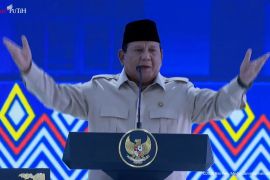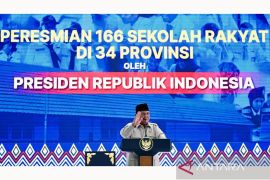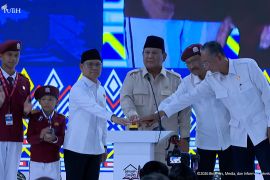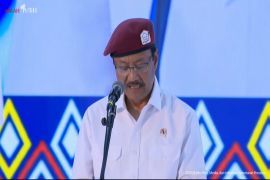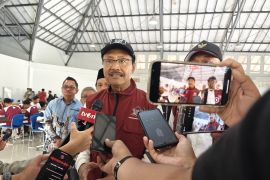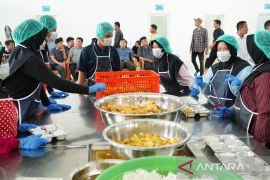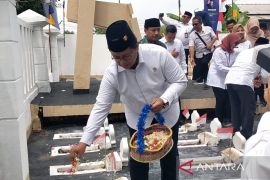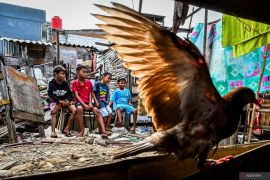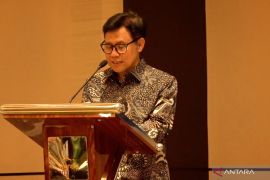Compared to the figure recorded in March 2022, the number of poor in Indonesia increased by 0.20 million in September.
BPS head Margo Yuwono said that the number of poor climbed tracking an increase in fuel oil prices, which raised the poverty line by 5.95 percent in September 2022 to Rp535,547 (around US$35.70) from Rp505,468 (around US$33.69) in March that year.
Apart from the increase in fuel prices, a spate of job terminations in the March–September 2022 period also contributed to the rise in poverty.
"Throughout March to September 2022, termination of employment occurred in labor-intensive sectors, such as textile, footwear, and technology industries," he said some time ago.
In 2022, indeed, Indonesia's economy was confronted with many challenges, including the fact that the national economy had not yet fully recovered from the pandemic's impact and there was an increase in inflation due to surging global commodity prices, especially energy and food prices, due to the Russia-Ukraine war.
Nevertheless, the number of poor in September 2022 was lower compared to September 2020, the first year of the pandemic.
In September 2020, the number of poor people stood at 27.55 million, or 10.19 percent of the total population.
Head of the Fiscal Policy Agency (BKF) of the Ministry of Finance, Febrio Kacaribu, said that the government's decision to increase energy subsidies and compensations was the main factor that restrained an increase in the poverty rate in September 2022.
In 2022, the realization of energy subsidies and compensations reached Rp551.2 trillion (around US$36.73 billion), while the projected figure in the State Budget (APBN) was only Rp192.7 trillion (around US$12.84 billion).
The realization also exceeded the budget for energy subsidies and compensations, which the government increased to Rp502.3 trillion (around US$33.47 billion) through Presidential Regulation Number 98 of 2022.
Continued poverty eradication
In 2022, the government issued Presidential Instruction Number 4 of 2022 on the acceleration of extreme poverty eradication, which set the target of ending extreme poverty in Indonesia by 2024.
According to President Joko Widodo, extreme poverty reduction acceleration must be carried out right on target through policies that include reducing the community's burden of expense, increasing the community's income, and reducing pockets of poverty.
Social Affairs Minister Tri Rismaharini has expressed optimism that the extreme poverty rate can be reduced to zero percent by 2024 from the current rate of 1.74 percent, with 5.5 million people categorized as extremely poor.
The government is also currently enhancing data on poor people through coordination between the Coordinating Ministry for Human Development and Culture and the Coordinating Ministry for Economic Affairs.
It is hoped that the 'by name by address' data of poor people, which is integrated between ministries and institutions, would support the government's extreme poverty eradication target by making efforts to end poverty more accurate.
The government has created three policy programs that are targeted directly at poor people: first, the provision of staple goods; second, the development of the social security system, among others, through the National Healthcare and Social Security Agency (BPJS Kesehatan) and micro, small, and medium enterprise (MSME) empowerment; and third, the provision of smallholder business credit (KUR).
Poverty alleviation
Besides ending extreme poverty, the government is also targeting to reduce the poverty rate to 7.5 to 6.5 percent by 2024.
An economist from the Center of Reform on Economics (CORE) Indonesia, Yusuf Rendy Manilet, said that the number of poor people will potentially decline in 2024. However, the government must make extra effort to reach the target, especially by improving the 'by name by address' data of poor people in the country.
The poverty alleviation program must be implemented by adjusting to the poverty rate in each region, meaning that the program carried out in each region does not have to be the same.
"The role of regional governments will also become significant, especially in the context of assisting with updated data collection, so that this can help the central government in mapping the distribution of social assistance this year and especially in 2024," Manilet said.
Though it declined compared to 2020, the poverty rate recorded in September 2022 did not reach the rate before the COVID-19 pandemic, namely 9.22 percent or 24.78 million.
This is because the economy had still not recovered to the pre-pandemic level, which was also reflected by the unemployment rate.
In August 2022, the open unemployment rate in Indonesia stood at 5.86 percent, or still higher than the open unemployment rate of 5.28 percent recorded in August 2019 before the COVID-19 pandemic.
To this end, he said that in 2024, the government also needs to maintain the rate of national economic activities and growth so that poor people can find jobs and improve their lives.
Poverty alleviation policies need to be integrated between various ministries and government institutions to reach the extreme poverty target.
"We know that, in 2024, the government (will) allocate social assistance fund that is relatively higher compared to 2023. Therefore, it will become a supporting factor for the reduction in the number of poor people," he added.
The implementation of government policies is expected to help reduce the poverty rate in the country.
Related news: Govt urges regions to update data for accurate aid disbursal
Related news: BKKBN deploys 101,236 officers for 2023 Family Data Collection
Related news: West Papua evaluates stunting, extreme poverty interventions
Translator: Sanya Dinda, Raka Adji
Editor: Sri Haryati
Copyright © ANTARA 2023

